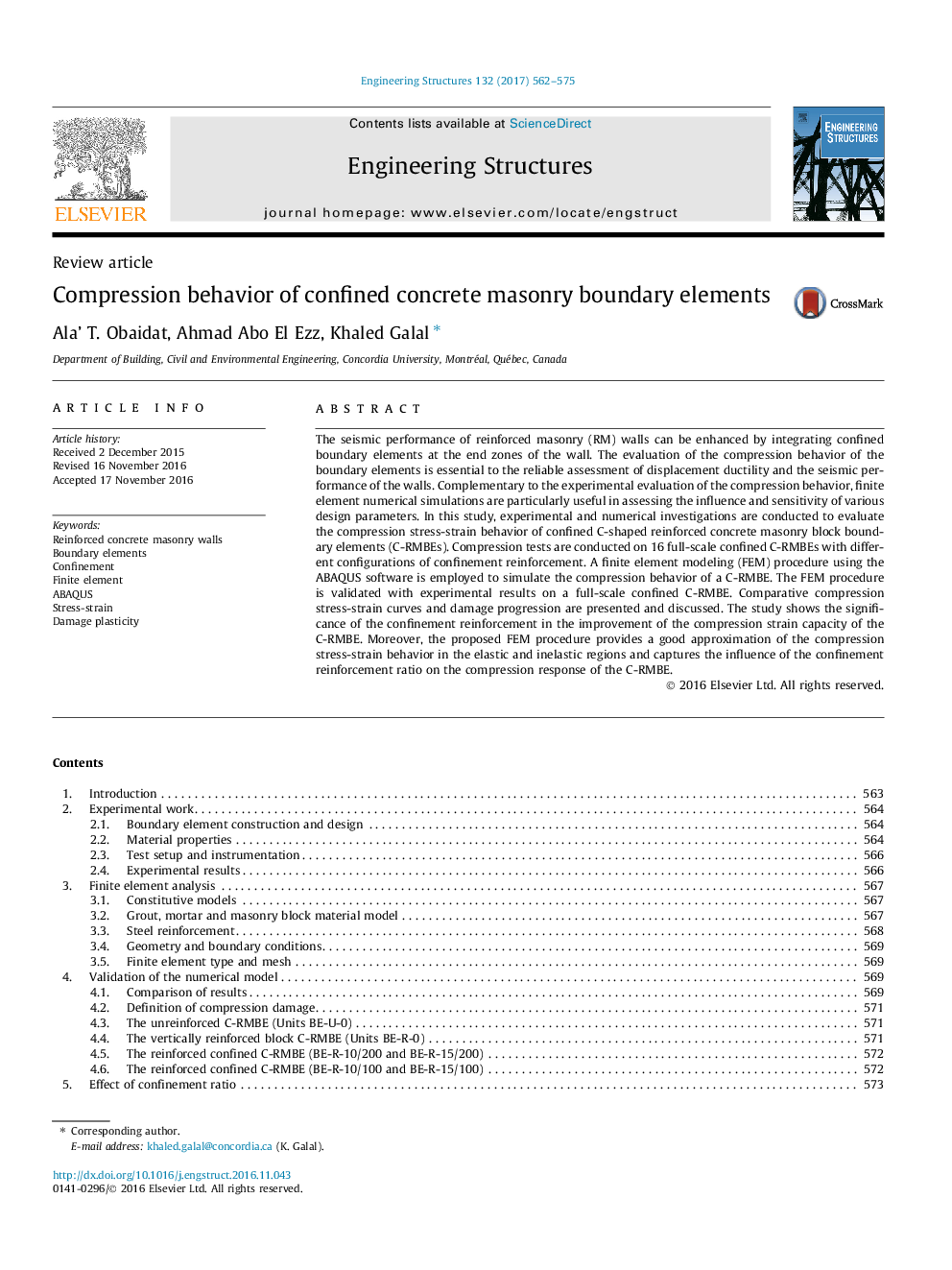| Article ID | Journal | Published Year | Pages | File Type |
|---|---|---|---|---|
| 4920456 | Engineering Structures | 2017 | 14 Pages |
Abstract
The seismic performance of reinforced masonry (RM) walls can be enhanced by integrating confined boundary elements at the end zones of the wall. The evaluation of the compression behavior of the boundary elements is essential to the reliable assessment of displacement ductility and the seismic performance of the walls. Complementary to the experimental evaluation of the compression behavior, finite element numerical simulations are particularly useful in assessing the influence and sensitivity of various design parameters. In this study, experimental and numerical investigations are conducted to evaluate the compression stress-strain behavior of confined C-shaped reinforced concrete masonry block boundary elements (C-RMBEs). Compression tests are conducted on 16 full-scale confined C-RMBEs with different configurations of confinement reinforcement. A finite element modeling (FEM) procedure using the ABAQUS software is employed to simulate the compression behavior of a C-RMBE. The FEM procedure is validated with experimental results on a full-scale confined C-RMBE. Comparative compression stress-strain curves and damage progression are presented and discussed. The study shows the significance of the confinement reinforcement in the improvement of the compression strain capacity of the C-RMBE. Moreover, the proposed FEM procedure provides a good approximation of the compression stress-strain behavior in the elastic and inelastic regions and captures the influence of the confinement reinforcement ratio on the compression response of the C-RMBE.
Related Topics
Physical Sciences and Engineering
Earth and Planetary Sciences
Geotechnical Engineering and Engineering Geology
Authors
Ala' T. Obaidat, Ahmad Abo El Ezz, Khaled Galal,
